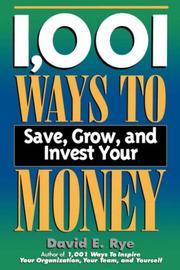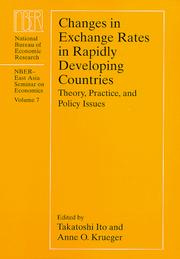| Listing 1 - 5 of 5 |
Sort by
|
Periodical
ISSN: 15462676 Year: 1999 Publisher: East Lansing, MI : Kappa Omicron Nu
Abstract | Keywords | Export | Availability | Bookmark
 Loading...
Loading...Choose an application
- Reference Manager
- EndNote
- RefWorks (Direct export to RefWorks)
Home economics --- Consumer education --- Consumer education. --- Home economics. --- Domestic economy --- Domestic science --- Family and consumer sciences --- Household management --- Household science --- Buyers' guides --- Shoppers' guides --- Family life education --- Home --- Formulas, recipes, etc. --- Households --- Consumer affairs departments --- Consumers' leagues --- Education --- Shopping
Periodical
ISSN: 19385927 Year: 1999 Publisher: [Place of publication not identified] : [Lubbock, TX] : National Association of Teacher Educators for Family and Consumer Sciences, LEAD FCS Education
Abstract | Keywords | Export | Availability | Bookmark
 Loading...
Loading...Choose an application
- Reference Manager
- EndNote
- RefWorks (Direct export to RefWorks)
Home economics --- Study and teaching --- Study and teaching. --- Domestic economy --- Domestic science --- Family and consumer sciences --- Household management --- Household science --- Family life education --- Home --- Consumer education --- Formulas, recipes, etc. --- Households
Book
Abstract | Keywords | Export | Availability | Bookmark
 Loading...
Loading...Choose an application
- Reference Manager
- EndNote
- RefWorks (Direct export to RefWorks)
July 2000 - Empirical econometric evidence shows that Mexico's simulated output recovery after a negative external shock was faster (a third as long) when the country's policymakers let the nominal foreign exchange rate float than when they fixed it, and much faster than in other developing countries that kept nominal foreign exchange rates constant, especially those that resorted to currency board arrangements to support that constancy. The academic and policy debate about optimal foreign exchange rate regimes for emerging economies has focused more on the theoretical costs and benefits of possible regimes than on their actual performance. Giugale and Korobow report on what can be called exchange-rate-regime-dependent differential shock persistence-that is, the time output takes to return to its trend after a negative shock-in a sample of countries representing various points on the spectrum of nominal foreign exchange flexibility. They find strong evidence that Mexico's simulated output recovery after a negative external shock was faster (a third as long) when the country's policymakers let the nominal foreign exchange rate float than when they fixed it, and much faster than in other developing countries that kept nominal foreign exchange rates constant, especially those that resorted to currency board arrangements to support that constancy. These results are insufficient to guide the choice of regime (they lack general equilibrium value and are based on a limited sample of countries), but they highlight an important practical consideration in making that choice: How long it takes for output to adjust after negative shocks is sensitive to the level of rigidity of the foreign exchange regime. This factor may be critical when the social costs of those adjustments are not negligible. This paper-a product of the Mexico Country Department, Latin America and the Caribbean Region-is part of a larger effort in the region to understand policy options open to developing countries for handling macroeconomic volatility in a globalized economy. The authors may be contacted at mgiugale@worldbank.org or akorobow@worldbank.org.
Currencies and Exchange Rates --- Currency --- Currency Board --- Currency Board Arrangements --- Currency Boards --- Debt Markets --- Domestic Economy --- Econometric Evidence --- Economic Stabilization --- Economic Theory and Research --- Economies --- Emerging Markets --- Exchange Rate Flo Exchange Rate Regime --- Exchange Regime --- External Shock --- Finance and Financial Sector Development --- Financial Crises --- Fiscal and Monetary Policy --- Foreign Exchange --- Foreign Exchange Rate --- Foreign Exchange Rates --- Inflation --- International Financial Integration --- Macroeconomic Management --- Macroeconomics and Economic Growth --- Monetary Unions --- Open Capital Accounts --- Private Sector Development --- Public Sector Development --- Structural Reform

ISBN: 0585212325 9780585212326 1564144046 Year: 1999 Publisher: [Place of publication not identified] Career Press
Abstract | Keywords | Export | Availability | Bookmark
 Loading...
Loading...Choose an application
- Reference Manager
- EndNote
- RefWorks (Direct export to RefWorks)
Finance, Personal --- Saving and investment --- Home economics --- Retirement --- Finance --- Business & Economics --- Financial Management & Planning --- Older people --- Superannuation --- Termination of employment --- Leisure --- Old age --- Domestic economy --- Domestic science --- Family and consumer sciences --- Household management --- Household science --- Family life education --- Home --- Consumer education --- Formulas, recipes, etc. --- Households --- Accumulation, Capital --- Capital accumulation --- Capital formation --- Investment and saving --- Saving and thrift --- Capital --- Supply-side economics --- Wealth --- Investments --- Financial management, Personal --- Financial planning, Personal --- Personal finance --- Personal financial management --- Personal financial planning --- Financial literacy --- Accounting --- Planning --- Home economics. --- Retirement. --- Accounting. --- Planning.

ISBN: 0226386732 9786611223663 1281223662 0226386937 9780226386935 9780226386737 Year: 1999 Volume: 7 Publisher: Chicago (Ill.): University of Chicago press,
Abstract | Keywords | Export | Availability | Bookmark
 Loading...
Loading...Choose an application
- Reference Manager
- EndNote
- RefWorks (Direct export to RefWorks)
The exchange rate is a crucial variable linking a nation's domestic economy to the international market. Thus choice of an exchange rate regime is a central component in the economic policy of developing countries and a key factor affecting economic growth. Historically, most developing nations have employed strict exchange rate controls and heavy protection of domestic industry-policies now thought to be at odds with sustainable and desirable rates of economic growth. By contrast, many East Asian nations maintained exchange rate regimes designed to achieve an attractive climate for exports and an "outer-oriented" development strategy. The result has been rapid and consistent economic growth over the past few decades. Changes in Exchange Rates in Rapidly Developing Countries explores the impact of such diverse exchange control regimes in both historical and regional contexts, focusing particular attention on East Asia. This comprehensive, carefully researched volume will surely become a standard reference for scholars and policymakers.
International finance --- Developing countries --- Foreign exchange --- Foreign exchange rates --- Government policy --- Congresses --- ASI / Asia - Azië - Asie --- LAM / Latin America - Latijns Amerika - Amérique Latine --- LDC / Developping Countries - Pays En Développement --- HK / Hong Kong --- JP / Japan - Japon --- KR / South Korea - Zuid Korea - Corée du Sud --- TW / Taiwan --- 382.242.0 --- 382.241 --- 333.825 --- 333.481 --- 333.450 --- 333.451.1 --- NBB congres --- -Foreign exchange --- -Foreign exchange rates --- -332.456091724 --- Exchange rates --- Fixed exchange rates --- Flexible exchange rates --- Floating exchange rates --- Fluctuating exchange rates --- Rates of exchange --- Cambistry --- Currency exchange --- Exchange, Foreign --- Foreign currency --- Foreign exchange problem --- Foreign money --- Forex --- FX (Finance) --- International exchange --- Currency crises --- Balans van het kapitaalverkeer: algemeenheden. --- Balans van het lopend verkeer. --- Deviezenpolitiek. Interventies. --- Monetaire crisissen, hervormingen, saneringen en stabilisering. --- Theorie van het deviezenverkeer. Theorie van de koopkrachtpariteit. --- Wisselkoersen. --- -Congresses --- Rates --- Conferences - Meetings --- Government policy&delete& --- E-books --- 332.456091724 --- Theorie van het deviezenverkeer. Theorie van de koopkrachtpariteit --- Wisselkoersen --- Monetaire crisissen, hervormingen, saneringen en stabilisering --- Deviezenpolitiek. Interventies --- Balans van het lopend verkeer --- Balans van het kapitaalverkeer: algemeenheden --- Foreign exchange - Government policy - East Asia - Congresses --- Foreign exchange - Government policy - Developing countries - Congresses --- Foreign exchange rates - Developing countries - Congresses --- Foreign exchange rates - East Asia - Congresses --- finance, financial, money, income, wealth, currency, currencies, country, international, global, theories, policies, domestic, economy, economics, market, regime, growth, history, historical, analysis, academic, scholarly, research, east asia, textbook, college, university, higher education, crisis, flow, comparison, interview, latin america, taiwan, korea.
| Listing 1 - 5 of 5 |
Sort by
|

 Search
Search Feedback
Feedback About UniCat
About UniCat  Help
Help News
News